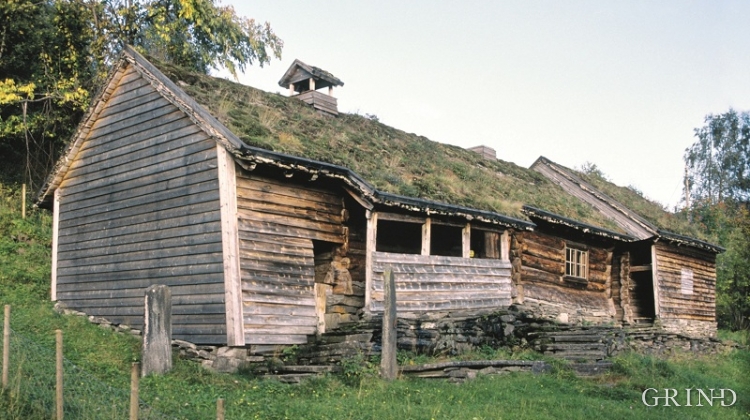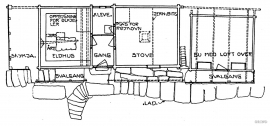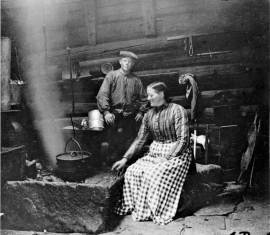Published: 26.02.2013 | Author: Nils Georg Brekke, Ole Didrik Lærum
The old vicarage at Oppheim. Image from 1990. (Svein Nord)
The dwelling houses (innhusa) at Oppheim are situated in a long, continuous row; store, scullery, living quarters and a room with a loft. Between the scullery and the living quarters there is a passageway, and along the front there has been a partial open gallery. The style with divisions into various functions that we encounter in this structure corresponds quite accurately with other joined longhouses on the coast, in the heath landscape. It is most likely the style of the Middle Ages that emerges in front of our eyes here.
Life in the smokehouse
The smokehouse – the living room through a thousand years – had an open fireplace from where the smoke drifted freely into the room and exited through a vent in the roof. In the old days most of these living rooms had a fireplace in the middle of the room, while others had a stove in a corner of the room.
The smokehouse was the only house that was heated through the winter. In the open hearth house people sat around the fire, which was used for lighting, heating and for cooking. Here they gathered on the long benches at mealtimes. In the old days people slept on earthen benches along the walls. These were broad benches filled with dry earth or sand.
To hang the kettle over the fire a “gallows” was used, which was fastened at the wall, a so-called crank. In other rooms there was a fixed pole above the fireplace, a type of bolt, for the same purpose. In the fireplace there was fire for most of the 24 hours, while a smoke-stove was lit every night and morning and served as a heat store.





